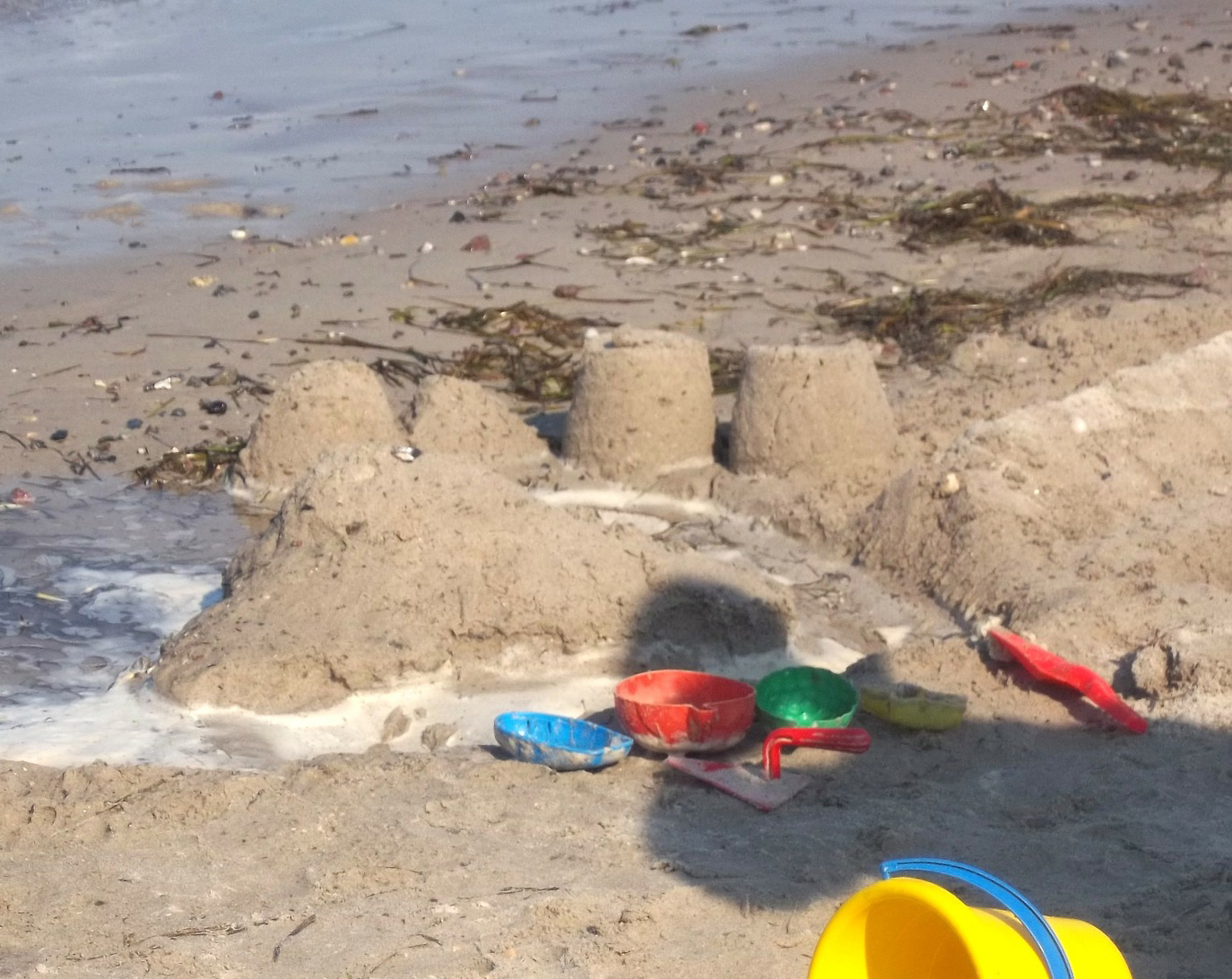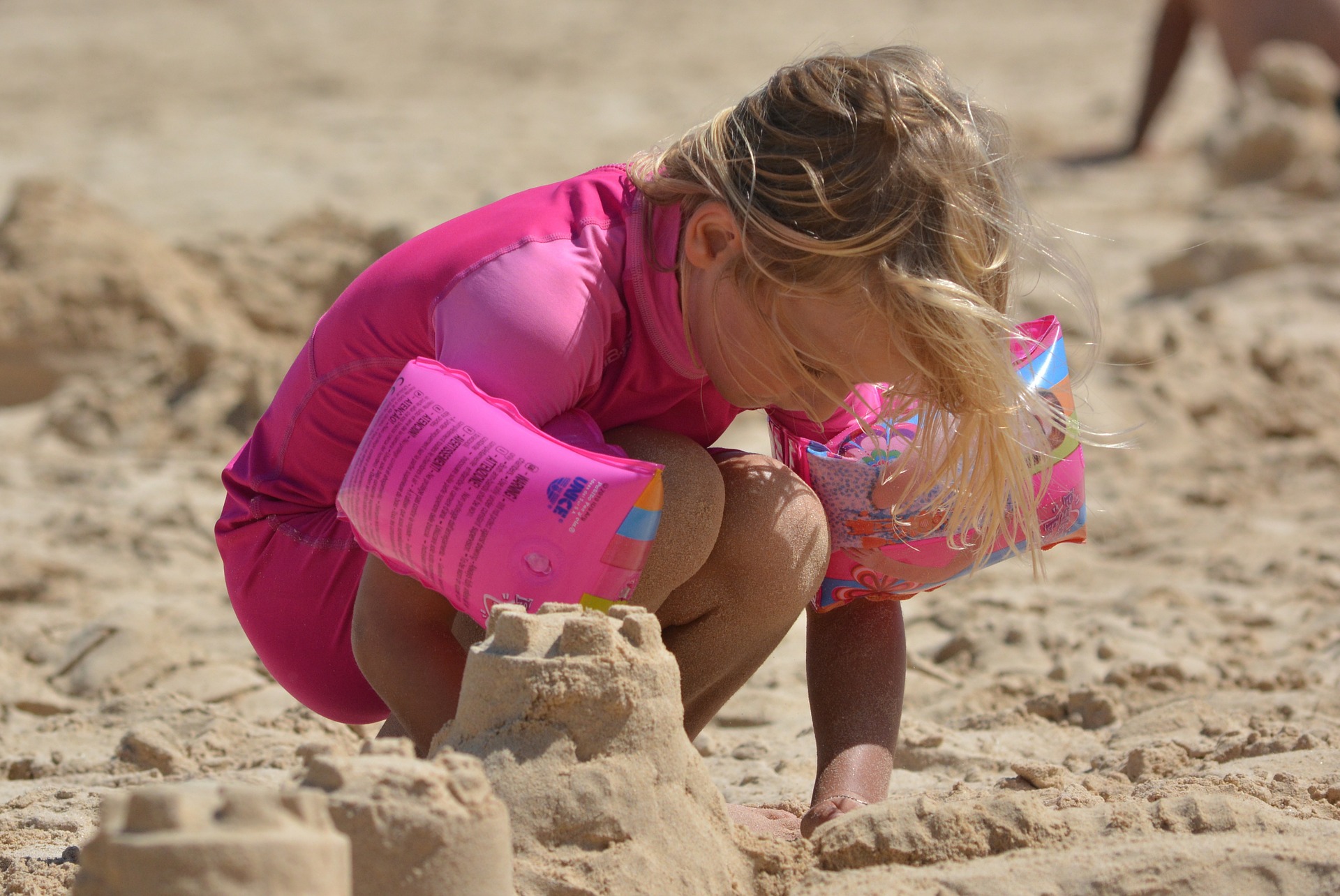How to make the perfect sandcastle
Everyone loves a trip to the beach. The sun, the surf … the sandcastles! From planning and construction through to decoration and inevitable destruction, there is real skill involved in making the perfect sandcastle ... and also real science.
While professional sand-sculptors often truck in their own, specialised sand, most holiday makers are happy to use whatever the beach provides.
The first consideration to building the perfect sandcastle is getting the water-to-sand ratio right. Too little and your construction crumbles. Too much and your sand becomes a gloopy mess.
Luckily, scientists have been on the case, working hard to solve this delicate engineering problem for you. While traditional estimates put the ratio at one bucket of water for every eight buckets of sand (or 12.5 per cent water), research has revised the amount of liquid down to just 1 per cent.
Daniel Bonn and his team at the Laboratory of Physical Statistics in Paris conducted a series of experiments involving both the theoretical and practical modelling of sandcastles.

Their studies involved testing different levels of sand ‘wetness’ and examining how columns of sand collapsed as they were built higher and higher. The results, published in Nature, found that there is an optimum sand wetness level: beachgoers should be aiming for a liquid volume of 1 per cent. It may not seem like much, but by combining one part water with 99 parts dry sand, you are giving yourself the best chance of building the perfect, most stable sandcastle. The team concluded that ‘if this optimum concentration is used, sandcastles reaching five metres in height can be built.’ That would certainly be enough to impress any kids.
When sand is wet, water forms small bridges (shaped like a double-ended trumpet) between the grains of sand. The surface tension of the water will then pull the grains together, so that they are effectively connected by a series of meniscus bridges—this is what gives wet sand its strength. When enough of these bridges form, the mixture is able to hold its shape, enabling the creation of complex structures such as sandcastles.
You might assume that the more water you add, the more bridges are formed, therefore increasing the strength of the sand, but this was true only up to about 1 per cent water. Beyond this point, the bridges of water got close enough together that they started to merge, forming bigger bridges and blobs of water. The small bridges are stronger than these larger blobs, so increasing the water beyond the 1 per cent mark does not lead to a change of coherency—in fact, the castle will be weakened if too much water is applied.
Now on to the next dilemma—what tools to use. Plastic bucket? High-quality spade? Not according to physicists, who, after conducting a series of experiments, concluded that your hands are the best tools for the job.
Compaction is essential for a sturdy sandcastle, with a well-packed castle up to 30 per cent stronger than one that is more loosely built. By compacting the sand as much as possible, you shorten the molecular water bridges, making the sand stronger. While you can compress sand in a bucket, it loses much of its strength and compaction when it is tipped out. Using a spade can produce an uneven result and, according to the authors of the study, it ‘tends to introduce fractures in the sand’s structure rather than compact it’.

Your hands give you a lot more control over the amount of pressure you exert and how you mould the sand, making them the perfect building tool.
So, how high can you go? Even with the perfect sand-to-water ratio and the most capable hands in the world, there is another aspect affecting the creation of the perfect sandcastle—the height-to-radius ratio. The same team who discovered the 1:99 ratio also found that the maximum height of a sandcastle varies with its width.
Interestingly, they found that the height-to-radius ratio decreases the wider you make your column. So a wider, bigger base won’t give you additional stability to build up extra height, at least past a certain point. Using typical beach sand, the team found that by building a cylinder with a base radius of only 20 centimetres, they could reach a height of 2.5 metres—an impressive sandcastle in anyone’s books.
Building a sandcastle is always fun but, as science has shown, it’s not just child’s play. By studying how and why sandcastles hold together, and how and when they collapse, we can better understand fields as diverse as civil engineering, physics and soil mechanics, among others. Perhaps even more importantly, we can use that knowledge to impress our friends and family this Summer as we create tall, stable and beautiful sandcastles. Happy building!





